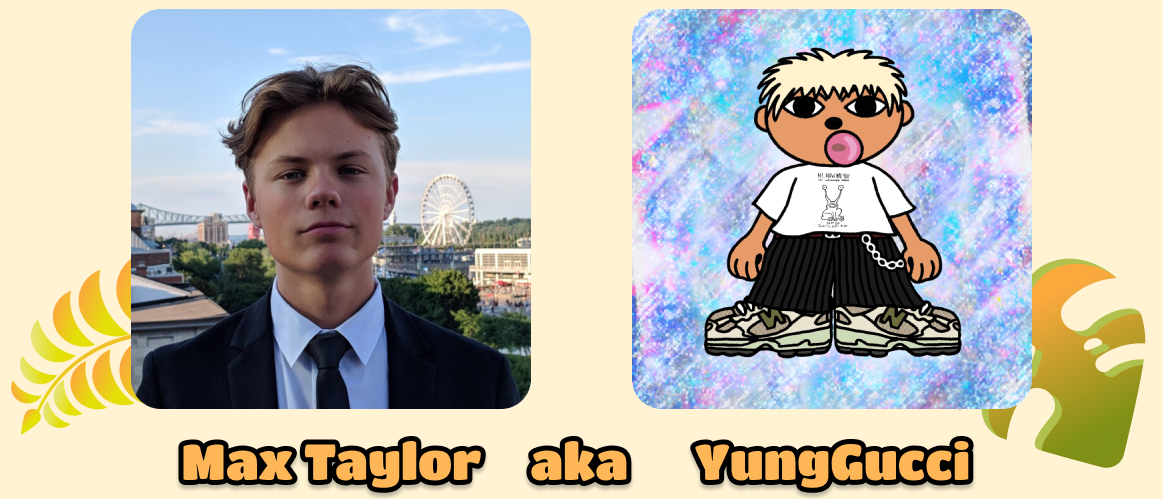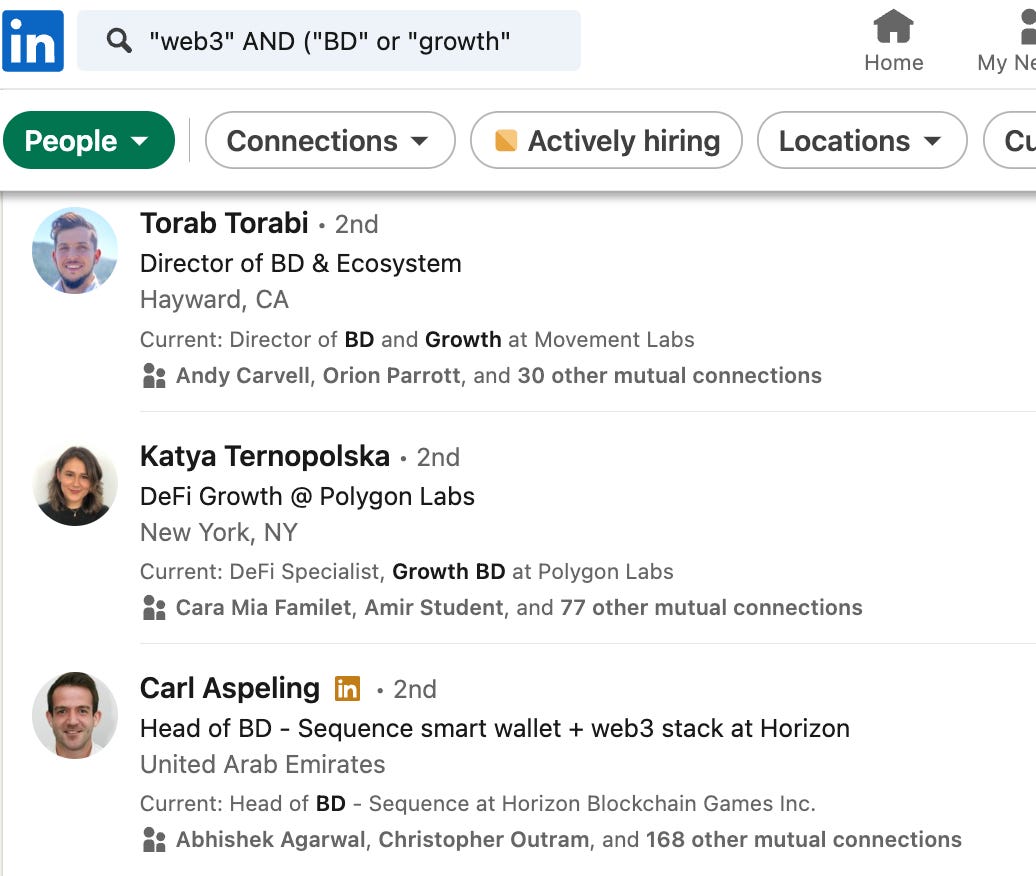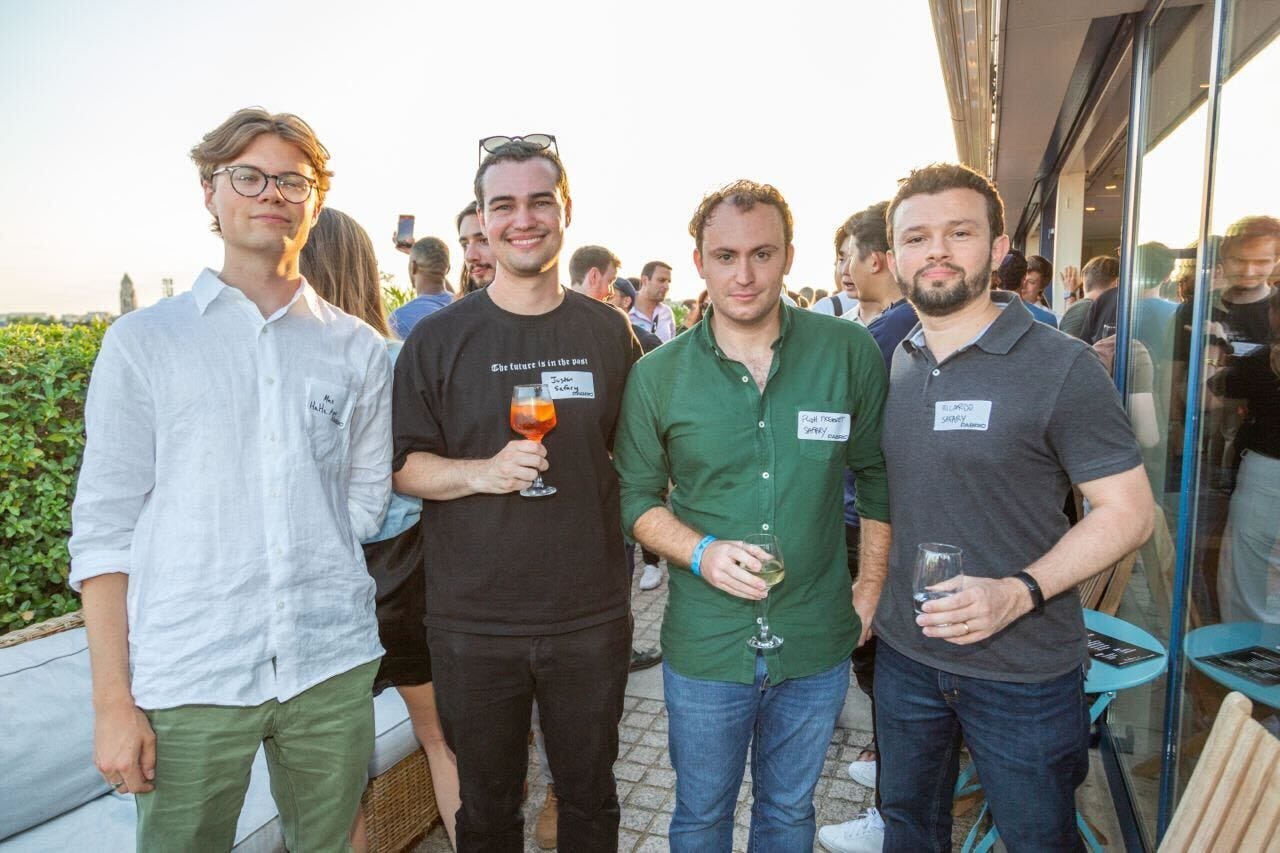The ultimate guide to hiring a web3 BD lead
And meet our new hire, Max! 🦁
Growth starts with hiring — who can *actually* grow your business?
Since closing our first BD hire, we’ve received countless questions about how to attract, evaluate, and close the strongest web3 BD candidates. In this post, we’ll open source our process, showing you how we vetted and closed a top hire in 4 weeks.
But before we dive in, meet our new hire Max!
Max is a DeFi degen, Safary Club member, and the former head of ecosystem & growth at HaHa app, the ultimate mobile wallet for crypto traders. He’ll be scaling adoption of Safary’s growth platform to the next hundred protocols and beyond.
Send him a message to congratulate him or ask how the best teams grow (hint: they’re using Safary 🦁!)
Without further ado, let’s dive in! 🦁
Hiring all stars stems from your hiring process. That means knowing what type of person you’re looking for, what would make them successful, and efficiently moving them through your funnel. This article is split into the three sections of that process: (1) The Setup, (2) The Evaluation, and (3) The Close.
The Setup
Sourcing (Outbound)
Target Profile - Message - Distribution
Sourcing helps you identify who you may be looking for and whether your “dream candidate” actually exists. Your ideal hire may not know you exist yet, and it’s your job to find them and convince them to leave their job for an awesome new opportunity.
We searched for candidates with BD experience and/or industry knowledge, so we filtered for web3 analysts, researchers, business managers, and ecosystem leads. We leveraged various queries (like this one) on LinkedIn, which output these profiles:
Then we reached out to candidates on Twitter. That’s where Justin has the most web3 social proof (10K+ followers) and could tag our company for further social proof.
But you don’t need to have a huge following to cut through the noise. Just tighten up your profile, so you can pass the “is this person legit?” test.
Here’s the message we sent candidates that got the highest response rate:
Keep it short and sweet: who we are, why we reached out, and why it’s compelling.
Applications (Inbound)
Career Page - Application - Distribution
Once you have a good sense of who you’re looking for and tightened up your job description, it’s time to generate inbound interest.
Think of your career page as your new landing page. Reflect on your value prop — what do you want candidates to know? A simple notion works well (example).
Like many web3 teams, we wanted candidates who were mission-aligned. That’s why we showcase our values at the very top of our career page 👇

Your career page should convert candidates from interested → contact info submitted.
That’s why we made our application form as simple as possible, collecting only what’s absolutely necessary to get signal to interview or not:
Contact: Name, Telegram
Socials: Twitter (required), LinkedIn (optional).
Why do you think you’d be a great fit for the role? (required)
Resume upload (optional)
Resumes were largely low signal. If they worked for a brand name company (Coinbase, MoonPay, etc), they often weren’t a fit for a true startup environment. And if they worked elsewhere, it was hard to qualify their experience b/c nobody has made it yet.
We got the most signal from checking their social graph on Telegram and Twitter (e.g. do we have an mutuals, who follows them).
When it came to getting the word out, we shared the application in TG groups and our socials, but we did NOT post a job description on traditional jobs channels (AngelList, LinkedIn, etc). If you do, you’ll be bombarded by web2 applicants.
This was our post for the Telegram groups:
Don’t be afraid to break out of the standard job post mold, telling candidates why joining your team would be an incredible career opportunity.
The Evaluation
Archetypes - Interview Questions - Onsites
Your BD hire is there to bring on new business. And to do so, they need to get in front of people (via their existing network or scrappy outbound) and close them.
We found that candidates were rarely great at both, and saw three core archetypes:
The Networker: These candidates have built an existing network from their most recent job, typically an L2/ecosystem or VC. These candidates often seem like a strong choice because they may’ve interfaced with teams you want to close, but it’s nearly impossible to vet the depth of their network. Once they’ve left their job, do those relationships hold? The best networkers can run through walls, but others may lose their access as soon as they leave.
If you’re seeking a networker, you’ll want to hire from the big chains (Arbitrum, Avalanche, etc) who tend to hire junior staff and level them up. Another place to look is for products with teams that have been around web3 for some time.
The Hustler: These candidates have a strong underdog mentality and are ready to be challenged, doing whatever it takes to grow both personally and for the company’s benefit. They’re very curious and plugged in, so they’ll have a strong grasp on your ICP and other compelling adjacent segments. They’re extremely scrappy, and will leave no stone unturned to get in front of top teams.
If you’re looking for a hustler, you’re in luck because this profile is the most common in web3. There are many full-time folks who are in web3 because they’re trying to make it.
The Closer: Strong closers tend to be more senior. They have high EQ and the technical acumen to understand what prospective web3 companies are doing and the metrics matter to them. They’re the best positioned to alter a product pitch in real-time depending on who they’re trying to close.
If you’re looking for a closer, be weary of senior hires. Senior leaders may have negative ROI, particularly those from web2. That’s because most web3 startups are small (<30) and won’t face the same challenges of scaling a BD team. If you come across a great closer early in their career, hire them — closing is the hardest skill to get right. Teach them how to get in front of people, and their network will naturally grow over time.
Ultimately, it comes down to what your team needs most. We realized the skill set we lacked most was a closer. When we saw Max pitch our product better than we did, we knew we’d found the one.
Once you know what profile you’re looking for, how do you evaluate them? We had a three step evaluation process:
These are the questions we asked at each stage and why ⬇️
Step 1: Interview with Safary’s CEO
In Justin’s initial screen, he emphasizes that the call will be a two-way conversation. He has 4 questions and they can ask anything they want. He’ll ask two, then it’ll be their turn to ask questions, and then he’ll conclude with two.
Here’s what we ask & why:
If you had the freedom to design your ideal role, what would it look like?
Instead of having the candidate pitch why they’d be a good fit, this question is designed to figure out what they *actually* want to do. Implicit in these answers, you’ll often learn about their strengths, how they see their career evolution, and if their desires match what the role requires.
Tell me about the best person you’ve worked with. What was your relationship with that person and what impressed you about them?
We want to get a sense of their values and who they strive to be. Candidates often tell us about who in their life has inspired them or pushed them to the next level.
Teach me about something you’re passionate about or recently learned.
This question is disarming, and gives us the chance to get to know the candidate. It’s also a great way to gauge their natural curiosity and evaluate whether they can deconstruct a subject for a layperson who lacks context on it.
If we move forward with an offer, we want to make sure we can offer something you’d be excited about, so around what range of compensation are you seeking?
It’s a good idea to try to get a sense of whether a candidate is in your range, and serves as good data to have when making an offer.
Step 2: Interview with Safary’s CPO
Web3 BD is often more solutions engineering than sales. That’s why it’s good to look for someone with enough technical acumen to understand what prospects are doing, the metrics that matter to them, if your solution can help, and what outcomes they can expect.
If we decided to move forward to this interview, they’d have a 30 minute call with Eliott about Safary’s product, which we encouraged them to check out beforehand.
In this interview, Eliott tries to get a sense of their understanding of the platform’s capabilities today and how they’d assess the platform.
In the second part of the interview, he tries to understand their process for getting in front of prospective clients.
While we’re hiring for someone to do outbound, we also need someone who is adaptable. So we also ask “if outbound doesn’t work, what would you do then?”
Step 3: Take-home & mock pitch
In the final step, we go deeper to assess their outreach & closing skills.
The Take-Home
We use a brief written exercise to see if they understand our ICP and hear their process for getting in front of people. We ask them to complete the following:
Choose a project you think should use Safary’s platform, then write 1-2 sentences on why they’d be a good fit.
How would you determine who to target at that project?
How would you reach them?
Based on your answers, write a message to that potential user trying to get them to either (a) book a meeting with you; or (b) try out Safary on their own.
The Mock Pitch
The best way to test if someone can sell your product is to see how they actually do it.
We had candidates do a mock BD call with a potential Safary platform user. The candidate meets with Matias Honorato, Axelar’s former Head of Growth, and Justin observes but is a fly on the wall (video off, doesn’t participate).
The candidate has 30 minutes to convince Matias that Squid (cross-chain swaps, powered by Axelar) should integrate Safary’s attribution SDK. The call could be a conversation, product demo, or whatever the candidate thinks would be helpful to get Matias over the line.
The Close
Strong BD hires are very competitive in web3, so if you’ve found someone you’re really excited about, congrats! 🎉 But that likely means other teams are excited about them too, so here’s how you can power sell in order to close them.
Don’t just walk a candidate through the offer. We present the offer verbally, share what impressed us about them in the interview process, and the opportunity ahead.
Then we follow up with an email to close the deal. We give our current valuation, exit scenarios, reasons why we’ll win, and our recent fundraising pitch deck.
This is the email we sent after we make an offer (with confidential info redacted):
Let your prospective candidate evaluate the opportunity like an investor would. After all, they’re investing the most valuable resource of all: their time.
Conclusion
Hiring the right person to grow your business might be one of the most important decisions you make. It’s about more than vetting they have the right skills; it’s about finding a true missionary who will represent your brand.
And remember, whether you’re meeting a candidate in an interview or out in the world, it pays to be nice to new folks you meet. Web3 is still so small that you may want to hire or work with them one day!
We were fortunate to get to know Max at past conferences, the most recent was 6+ months before he applied to our growth role.
Here’s a picture of all of us together at Ethcc! Ready, set, grow! 🚀










Really well written and helpful 3 step breakdown.
I'm hiring another sales rep to join our agency and I'll be adding the "mock pitch" to my process because of this article.